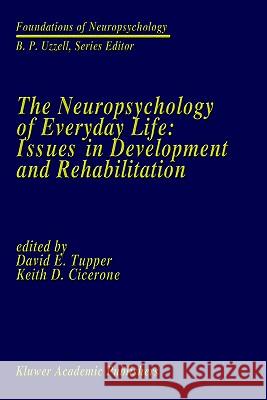The Neuropsychology of Everyday Life: Issues in Development and Rehabilitation » książka
The Neuropsychology of Everyday Life: Issues in Development and Rehabilitation
ISBN-13: 9780792308478 / Angielski / Twarda / 1990 / 313 str.
The Neuropsychology of Everyday Life: Issues in Development and Rehabilitation
ISBN-13: 9780792308478 / Angielski / Twarda / 1990 / 313 str.
(netto: 766,76 VAT: 5%)
Najniższa cena z 30 dni: 771,08
ok. 22 dni roboczych
Bez gwarancji dostawy przed świętami
Darmowa dostawa!
For a period of some fifteen years following completion of my internship training in clinical psychology (1950-1951) at the Washington University School of Medicine and my concurrent successful navigation through that school's neuroanatomy course, clinical work in neuropsychology for me and the psychologists of my generation consisted almost exclusively of our trying to help our physician colleagues differentiate patients with neurologic disorders from those with psychiatric disorders. In time, experience led all of us from the several disciplines involved in this enterprise to the conclusion that the crude diagnostic techniques available to us circa 1945-1965 had garnered little valid information on which to base such complex, differential diagnostic decisions. It now is gratifying to look back and review the remarkable progress that has occurred in the field of clinical neuropsychology in the four decades since I was a graduate student. In the late 1940s such pioneers as Ward Halstead, Alexander Luria, George Yacorzynski, Hans-Lukas Teuber, and Arthur Benton already were involved in clinical studies that, by the late 1960s, would markedly have improved the quality of clinical practice. However, the only psychological tests that the clinical psychologist of my immediate post Second Wodd War generation had as aids for the diagnosis of neurologically based conditions involving cognitive deficit were such old standbys as the Wechsler-Bellevue, Rorschach, Draw A Person, Bender Gestalt, and Graham Kendall Memory for Designs Test."











